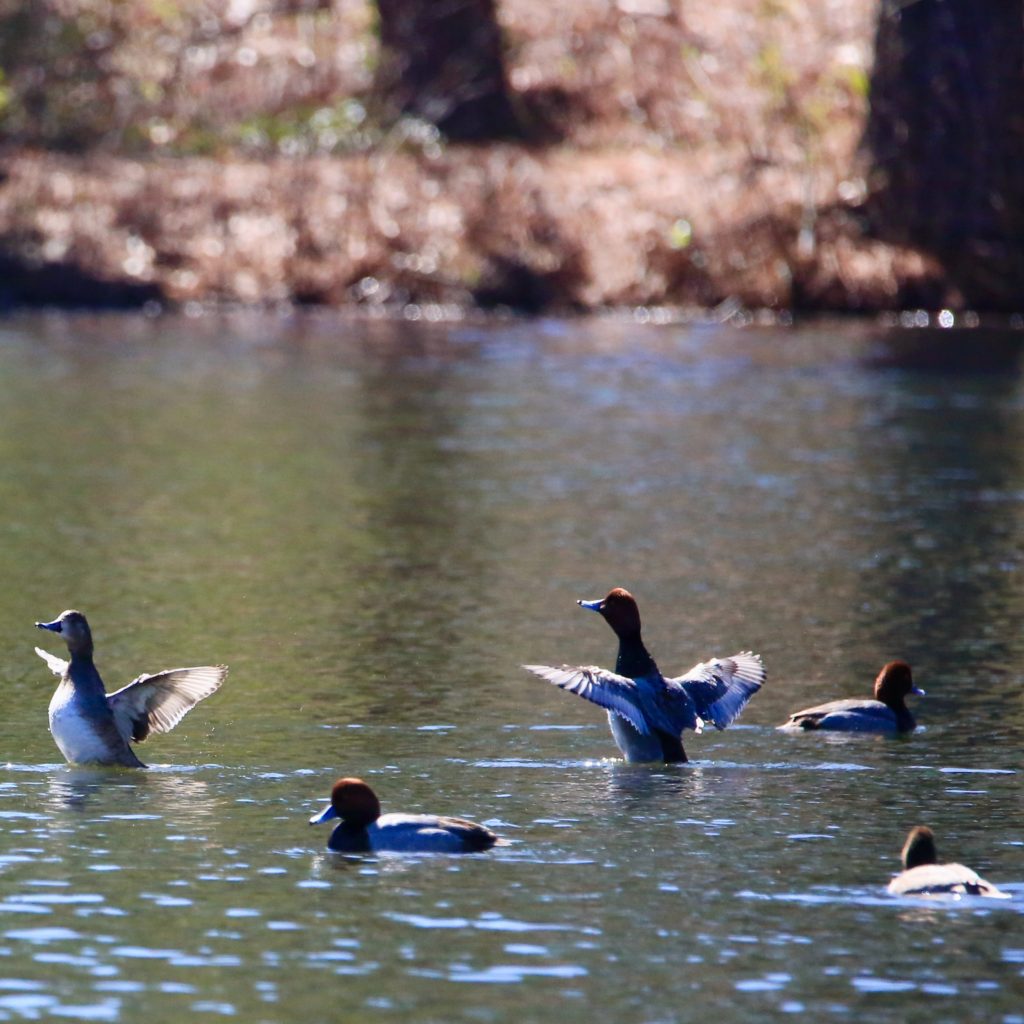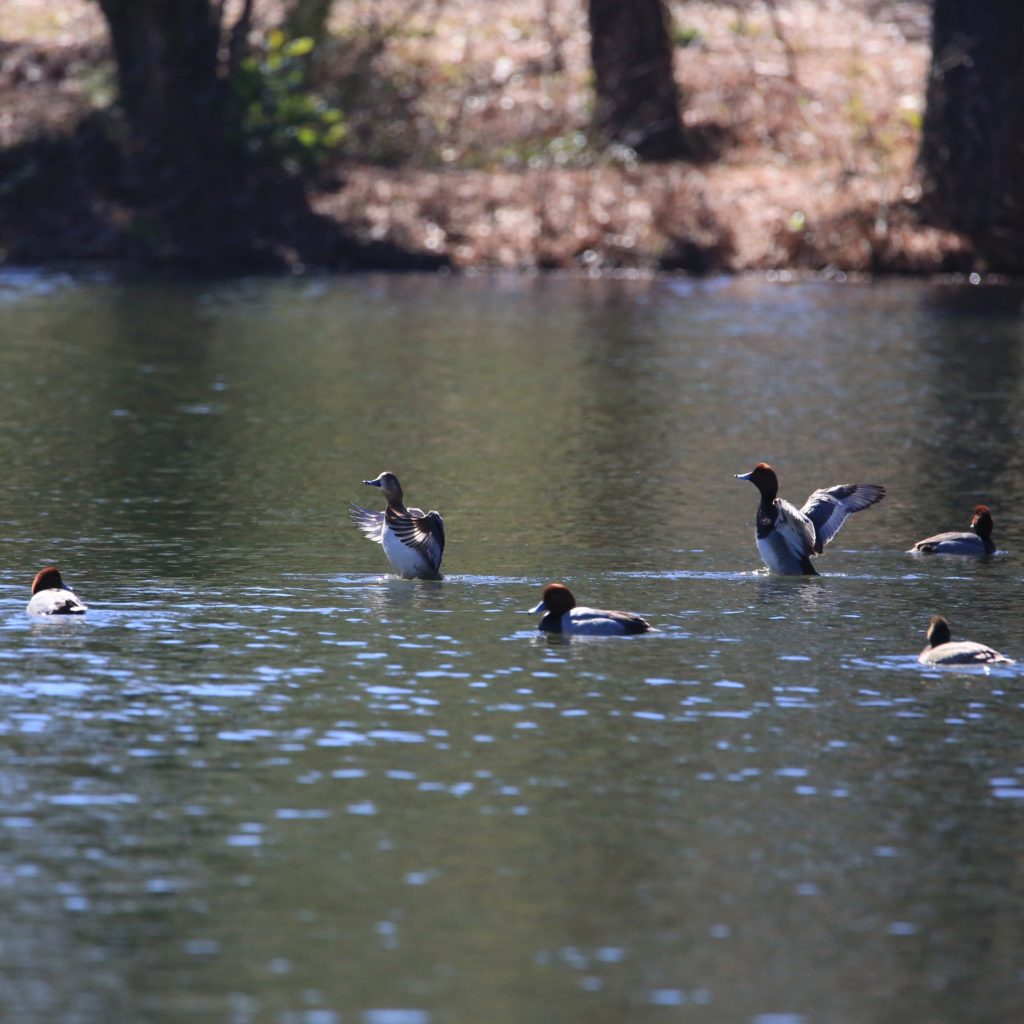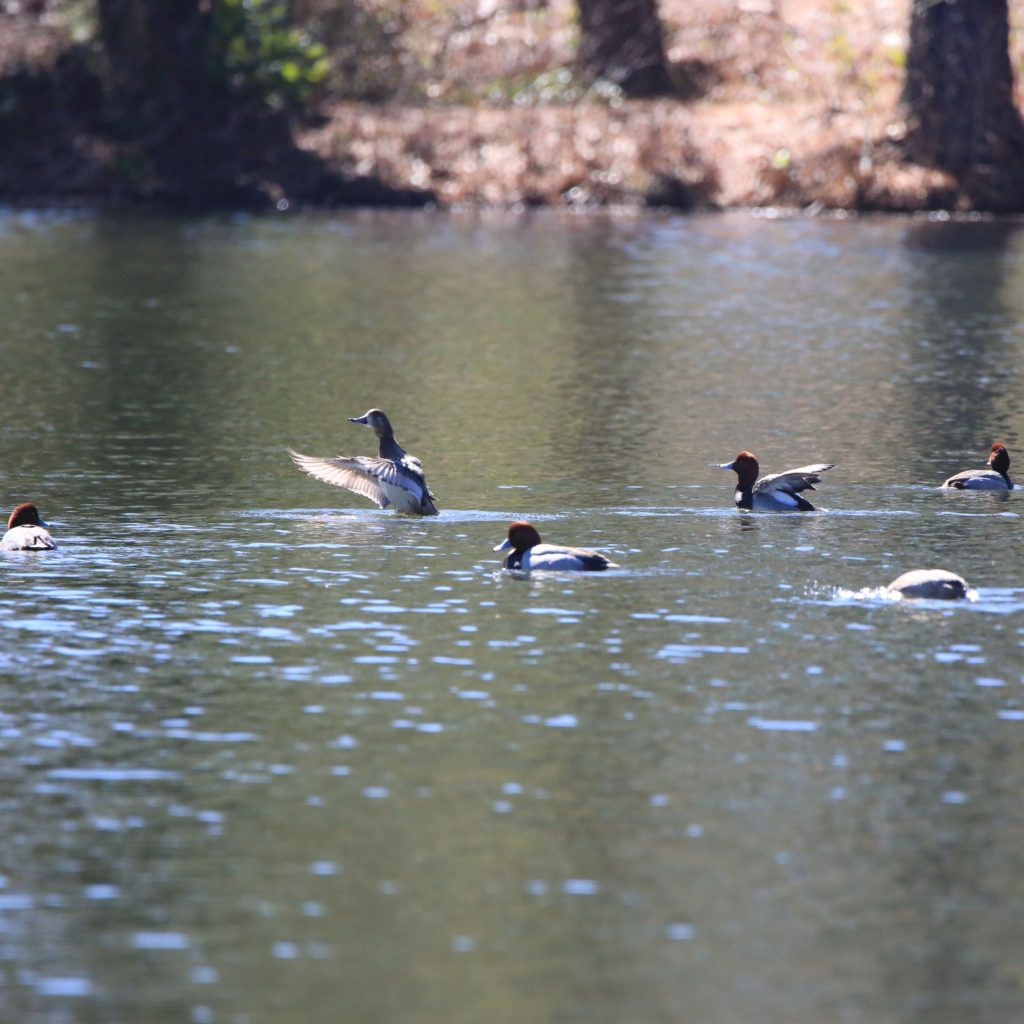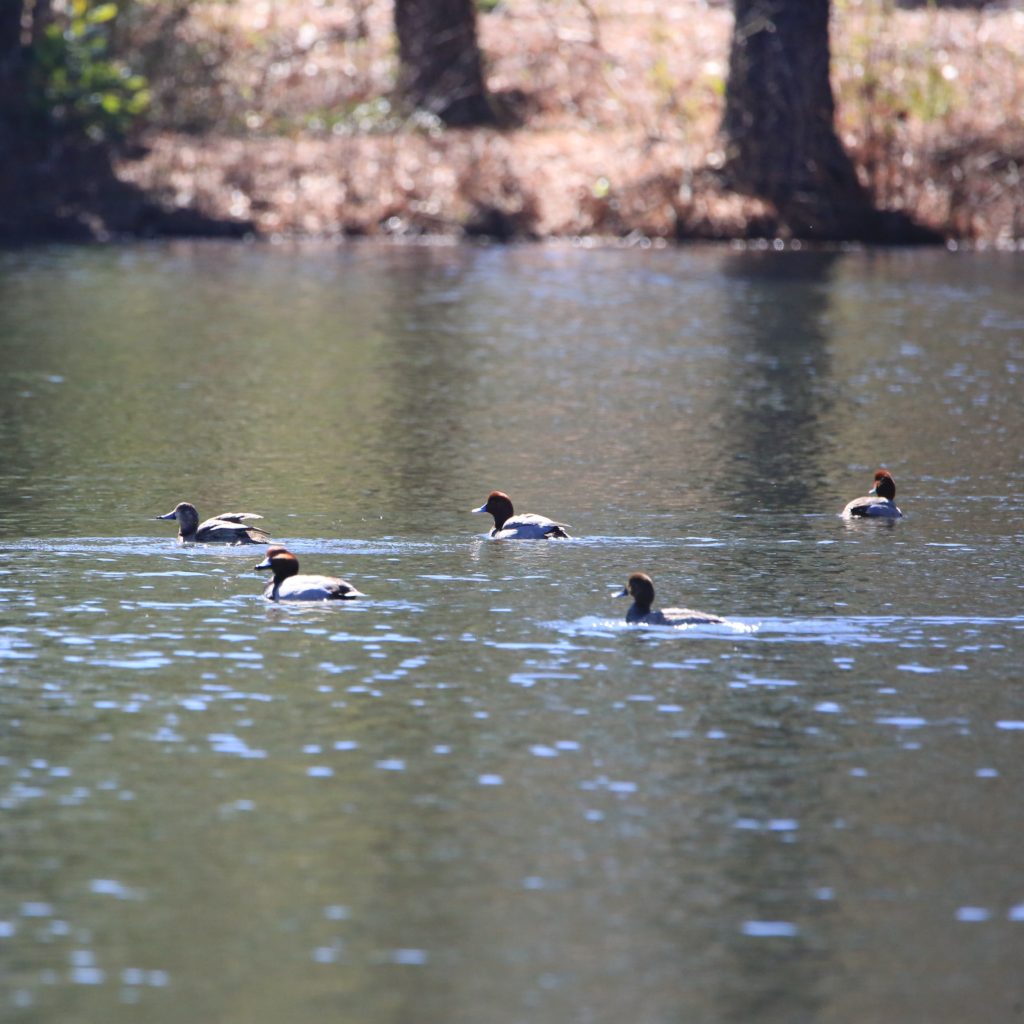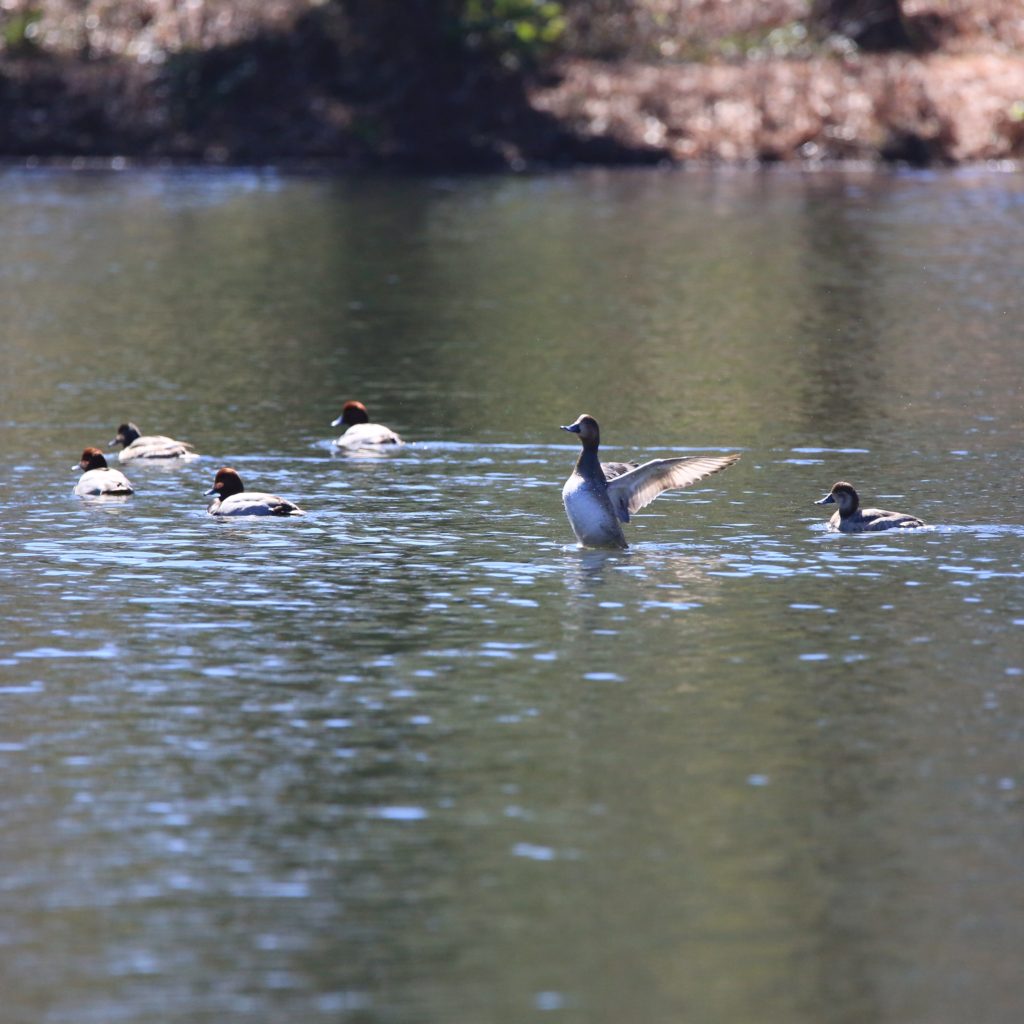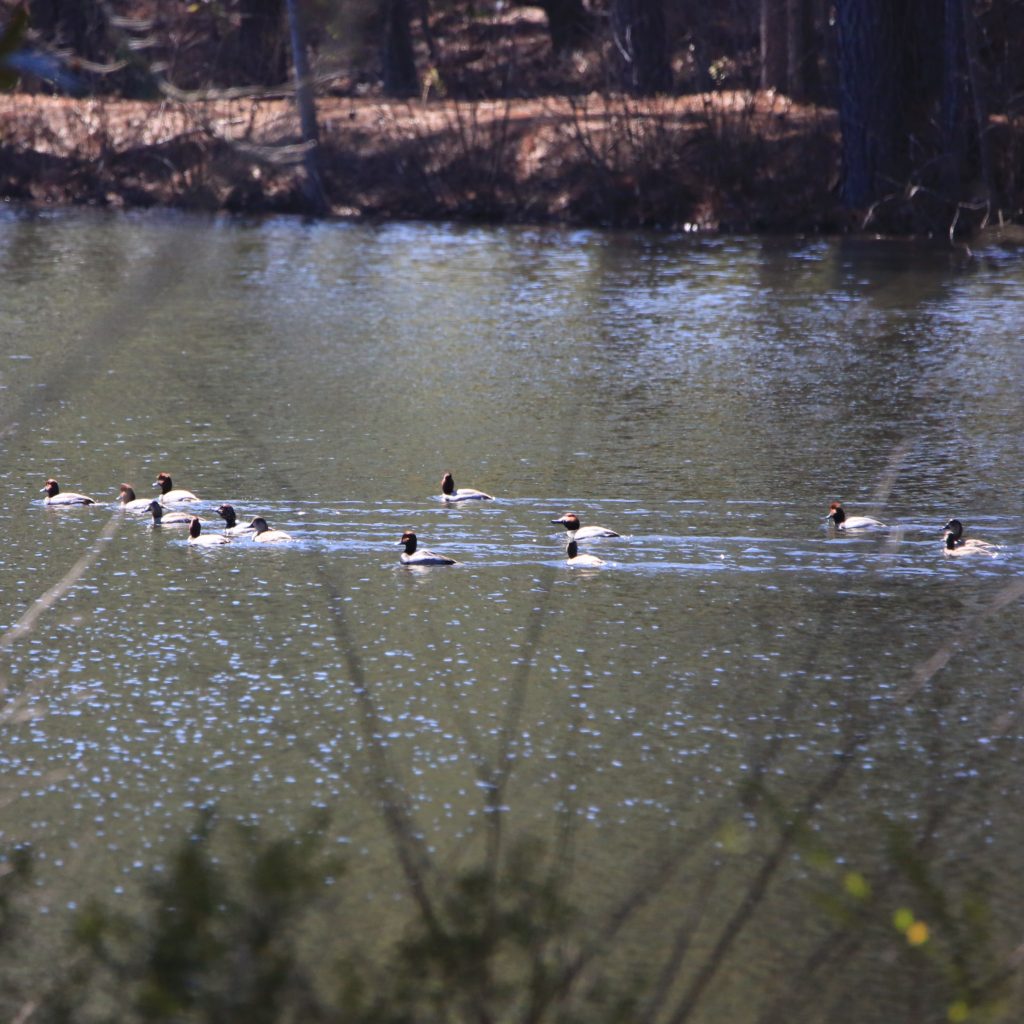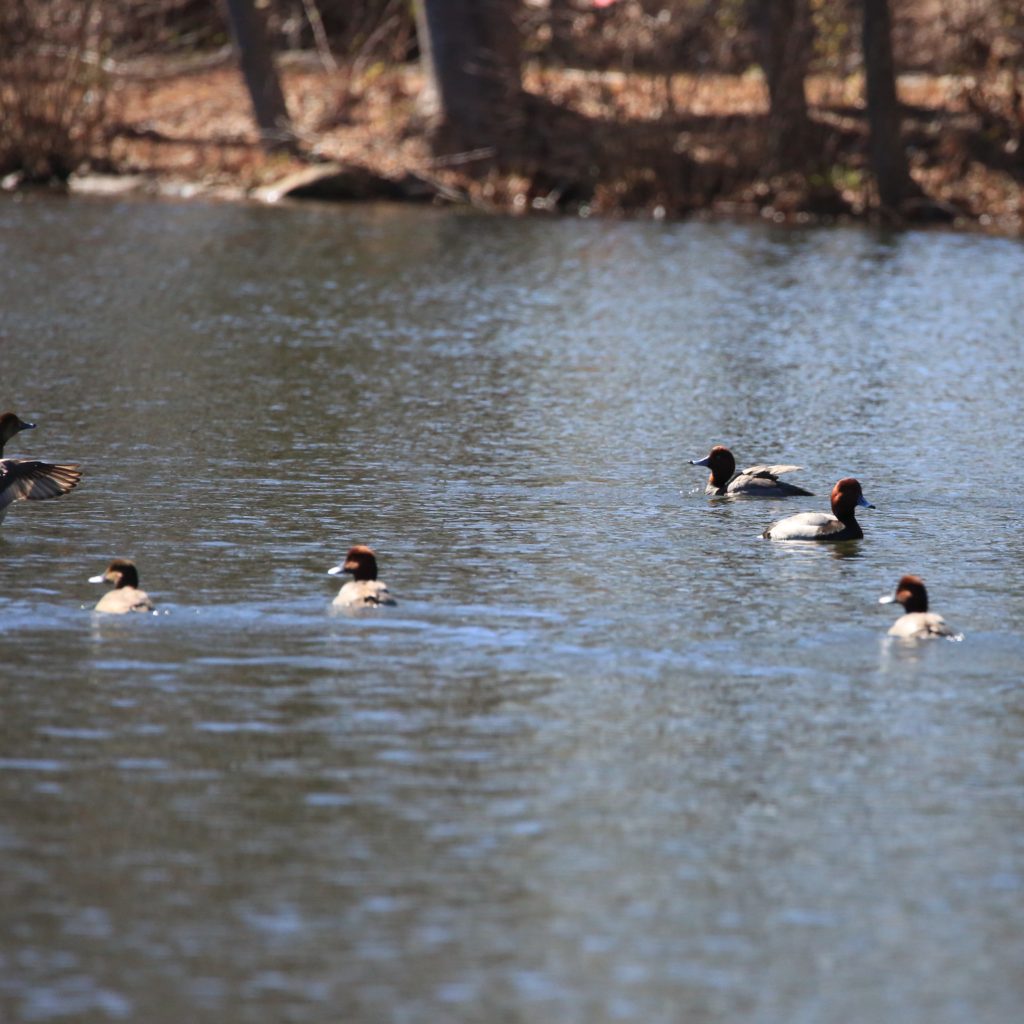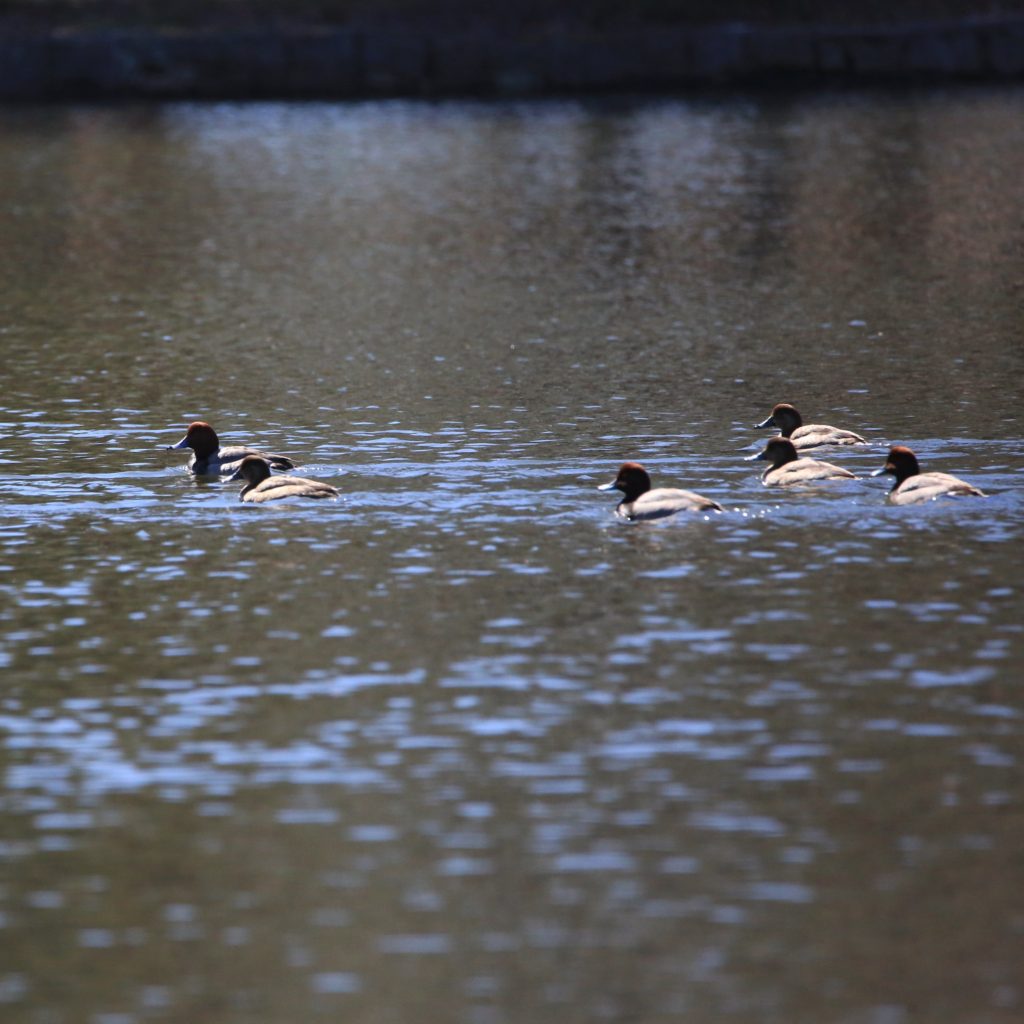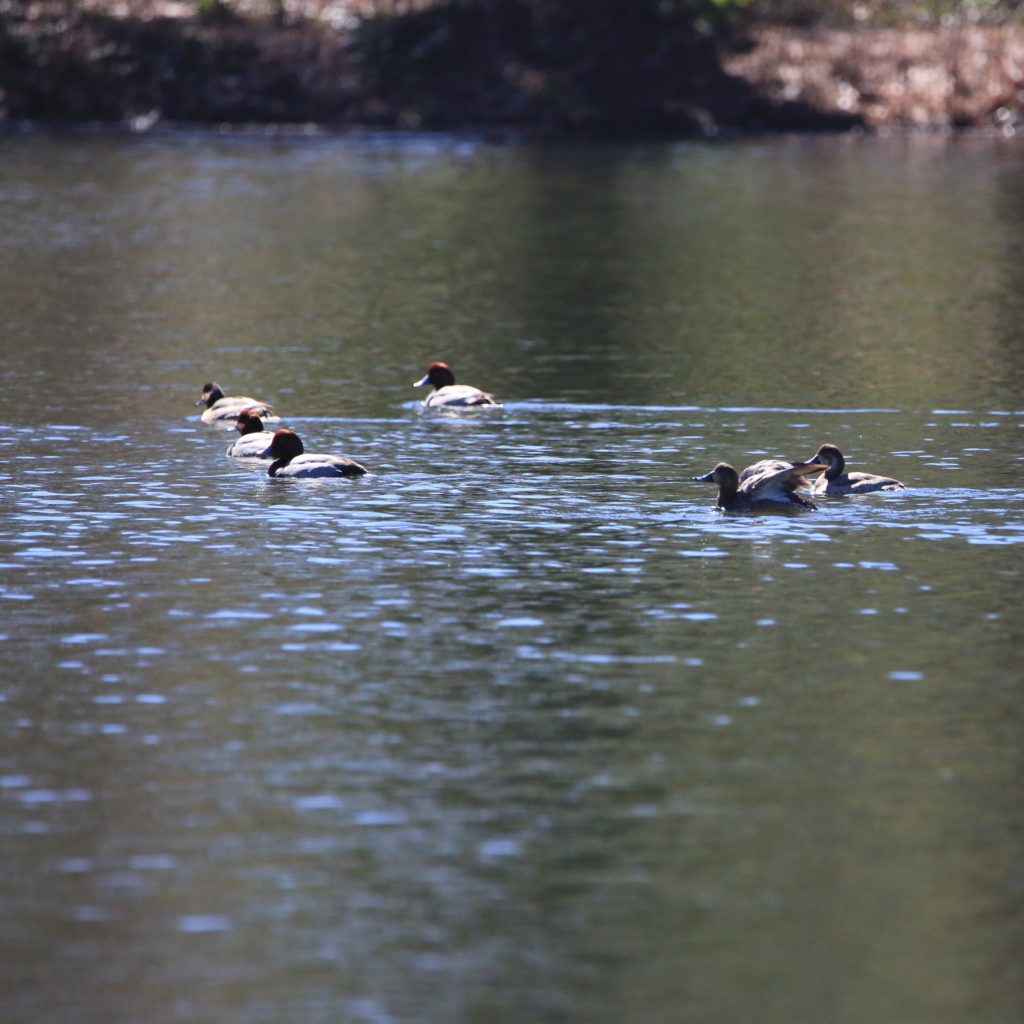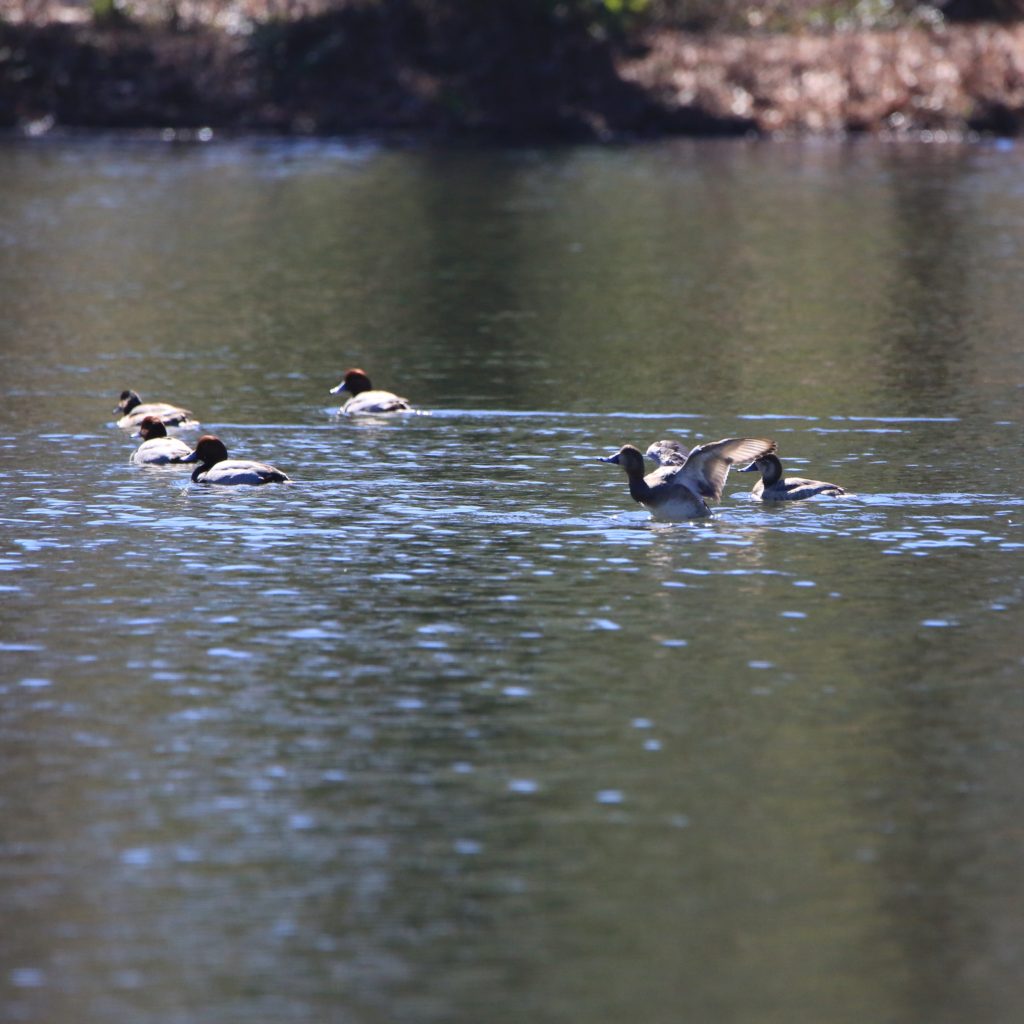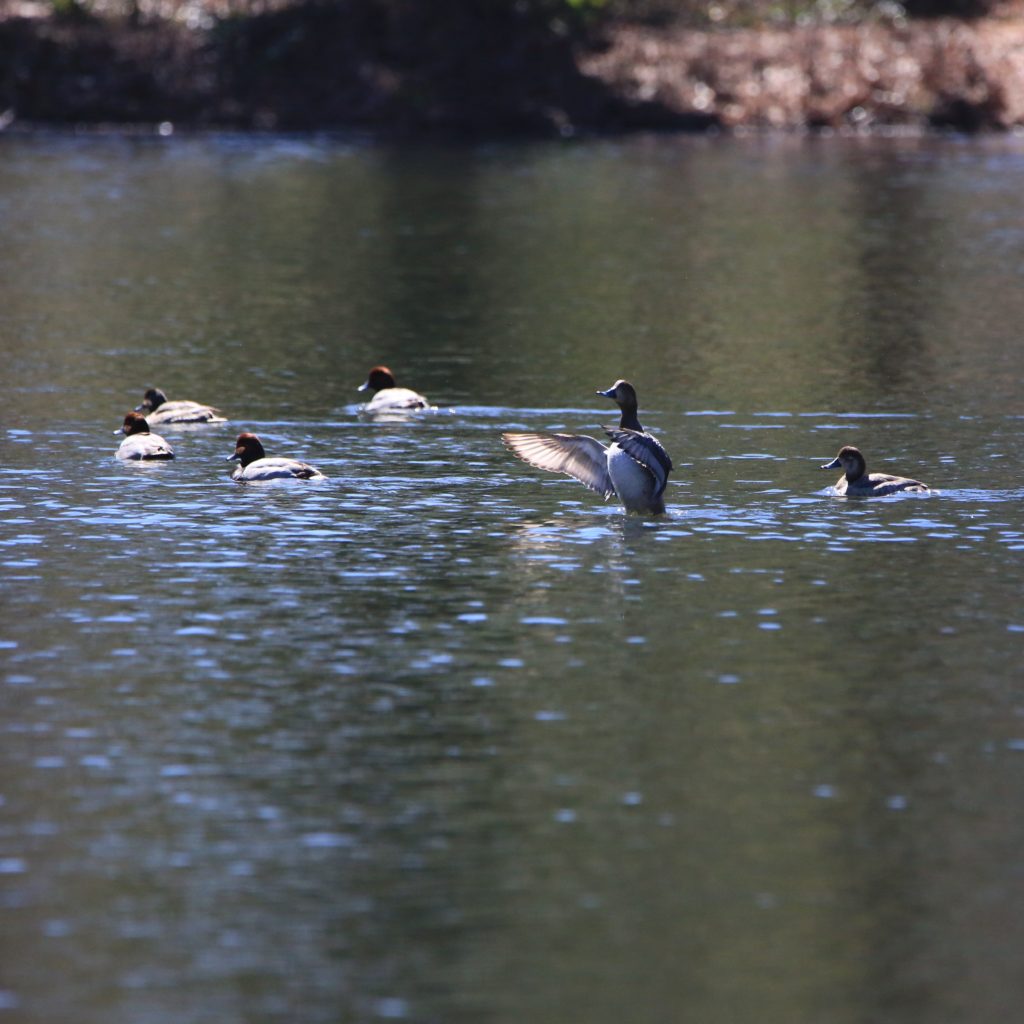
Redhead
A Redhead is a fun bird to see while bird watching. Below are some tips to help you identify Redheads. We have also put together a list of fun Redhead t-shirts, Redhead bird patches, birdhouses, bird feeders, binoculars, stickers, and other fun bird-watching items.
About Redheads
These social ducks are the master of brood parasitism. Even though most ducks employ this strategy during breeding, Redheads take it a notch higher. They parasitize other Redhead’s nests and another 10 duck species. Some females are entirely parasitic, as they never incubate their own eggs. During winter, they form flocks of up to tens of thousands of individuals. Some of their distinctive features include:
Description and Identification
Male Redheads have a characteristic reddish head and orange-yellow eyes. They have gray backs, white breasts, and whitish bellies with dusty undertones. Their feet are bluish-gray and they have gray wings that have white spots on them. Redheads molt in June, after which the color of their plumage becomes lighter than before. As winter approaches, the dark feathers of these birds grow back. Female Redheads lack the vibrant colors of the males. They have a yellowish-brown head with brown eyes. Their body is predominantly grayish-brown, while their belly is slightly lighter in color compared to the rest of their body. Both sexes have pale blue bills that measure around 0.5 inches in length.
Redhead Color Pattern
They have black upper parts with gray sides and white underparts. Their tail, rump, and breast are also black. They have rufous-brown heads and necks and a blue-gray bill with a black tip. Their eyes are yellow. Females tend to be duller and browner than males.
Redhead Size
They are medium-sized ducks with slightly larger bills and rounded heads. They are dwarfed by a canvasback but slightly larger than a ring-necked duck.
The relative size of both sexes
- Length range: 16.5-21.3 in (42-54 cm)
- Weight: 22.2-52.9 oz (630-1500 g)
- Wingspan range: 29.5-31.1 in (75-79 cm)
Redhead Behavior
During winter they are common in large rafts mixed with other species such as American coots and wigeon. They usually forage by diving in shallow water to catch small fish and other aquatic creatures. In shallow coastal lagoons, they simply feed by dipping their heads underwater.
Redhead Food
Redheads mostly sustain on a diet comprising vegetable matter. These birds dive to eat
submerged aquatic plants such as hard stem, bulrush, widgeon grass, pondweed, and green algae.
Other than these aquatic plants these birds also consume fish eggs, and invertebrates including
caddisflies, mayflies, snails, midges, and zebra mussels.
Their main diet is aquatic plants and insects. Redheads rarely feed on small fish. The diet mainly consists of seeds, roots, leaves, and stems. They feed on roots of smartweeds, shoalgrass, and pondweeds. In the summer they heavily feed on aquatic insects and mollusks.
Redhead Habitat
The breeding grounds of Redheads are mostly ponds and other wetlands. These ducks inhabit
habitats in which there is an abundance of aquatic vegetation which is necessary for food as well
as shelter. Younglings are raised by the females in deeper water bodies that are located near their
nesting sites. Redheads are very opportunistic in regards to their nesting sites. Sewage ponds,
agricultural ponds, reservoirs, and streams are all habitats that can be chosen by these ducks.
They predominantly breed in seasonal ponds and wetlands of the Midwest’s prairies pothole region. This is because of emergent plants that provide cover and food. They can also breed in sewage ponds, reservoirs, and streams. In winter they frequent coastal bays and lagoons.
Range and Migration
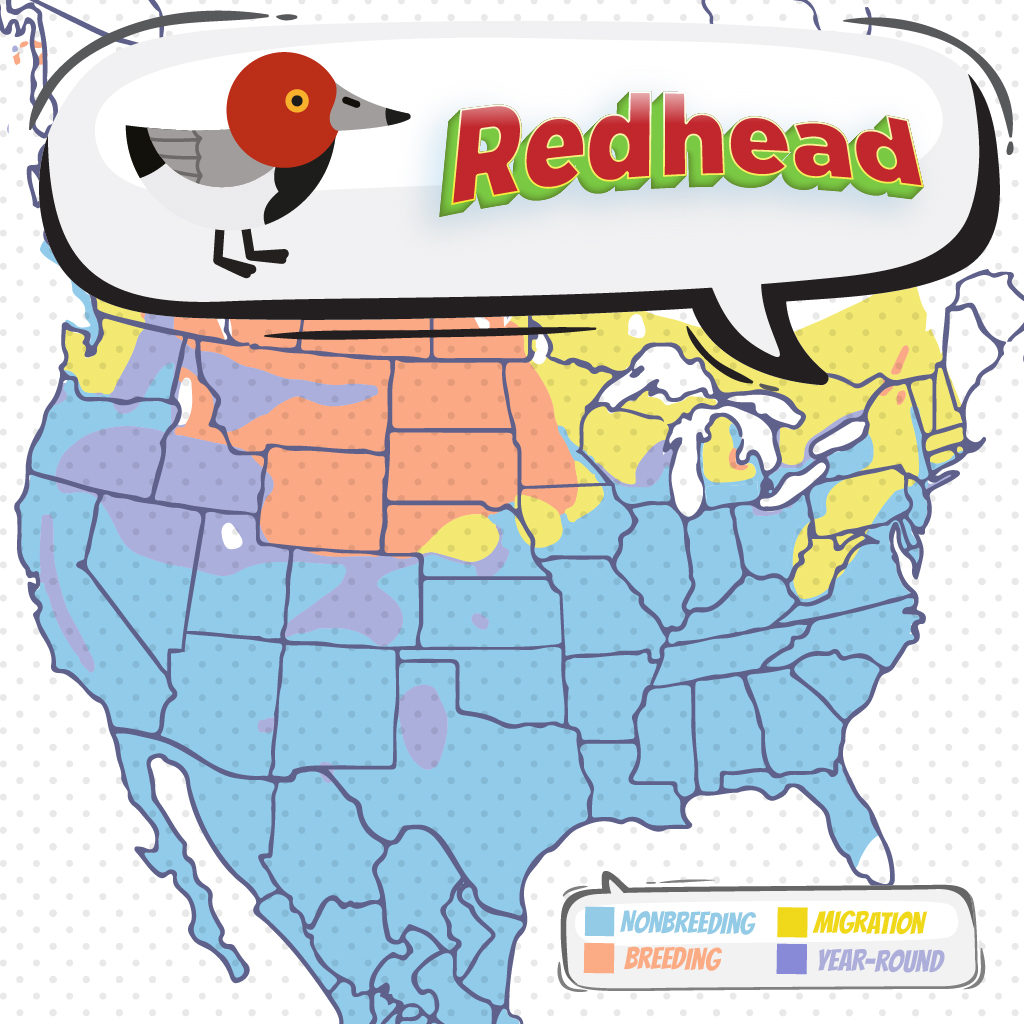
Redheads are medium-sized diving ducks that have a breeding range that extends from southern
Canada to the northern U.S. A number of Redhead populations breed in the northern Great Plains
of North America. Some populations have also been found in central Alaska. The winter range of
these birds extends from California to the Atlantic Coast. A number of Redhead populations also
winter in Florida and central and northern Mexico.
Redhead Lifecycle
The females usually lay 9-14 eggs and the female incubates them for 23-29 days. The young ones are then led by the female towards water about a day after hatching. They fledge after 60-65 days.
Redhead Nesting
Unlike most other birds, females approach the males. A female Redhead attempts to court the
male she’s after by twirling around him and showing him her back. Females might also nip at the
male, and come between the male’s path while he’s swimming. If females are courting more than
one male, then the males try to drive each other away. While some Redheads form pairs in winters,
most pairs are formed in April. Female Redheads are deserted by the males once the females
begin incubating eggs. Surprisingly, not all Redhead pairs breed — one reason for this might be
that some of the pairs are too young for mating. Redheads generally nest in potholes and marshes
during summer. The nesting sites chosen by these birds are generally located on islands, drylands, or over-dense aquatic vegetation. Redheads lay from 9-11 eggs that need to be incubated
for 24-28 days before they hatch. Redheads display normal, parasitic, and semi-parasitic egg-laying
behaviors. They might normally keep all their eggs, or lay some of their eggs in the nests of other
birds, or lay all of their eggs in the nests of other birds.
Ornithology
Bird Watching Academy & Camp Subscription Boxes
At Bird Watching Academy & Camp we help kids, youth, and adults get excited and involved in bird watching. We have several monthly subscription boxes that you can subscribe to. Our monthly subscription boxes help kids, youth, and adults learn about birds, bird watching, and bird conservation.
Bird Watching Binoculars for Identifying Redheads
The most common types of bird-watching binoculars for viewing Redheads are 8×21 binoculars and 10×42 binoculars. Bird Watching Academy & Camp sells really nice 8×21 binoculars and 10×42 binoculars. You can view and purchase them here.
Redhead T-shirts
If you love the Redhead you should purchase a Bird Watching Academy & Camp T-shirt. To help support bird conservation we donate 10 percent to bird conservation activities.
Redhead Iron On Patches
Kids, Youth, and Adults love to collect our Bird Watching Academy & Camp iron-on patches. Our bird-watching patches help you keep track of the birds you have seen and identified. You can also display the patches on our Bird Watching Academy & Camp banners.
The Redhead is a great iron-on patch to start your collection with. The patches are durable and can be sewn on or ironed on to just about anything.
Redhead Stickers
Stickers are a great way for you to display your love for bird watching and the Redhead. We sell a monthly subscription sticker pack. The sticker packs have 12 bird stickers. These sticker packs will help your kids learn new birds every month.
Bird Feeders for Redheads
There are many types of bird feeders. Here are our favorite bird feeders for your backyard. We use all of these bird feeders currently. Kids will have a great time watching birds eat at these bird feeders. Using this collection of bird feeders will provide a wide variety and many types of birds.
Best Bird Houses for Redheads
There are many types of birdhouses. Building a birdhouse is always fun but can be frustrating. These 4 birdhouses have become our favorites. Getting a birdhouse for kids to watch birds grow is always fun. We spent a little extra money on these birdhouses but they have been worth the higher price and look great.


